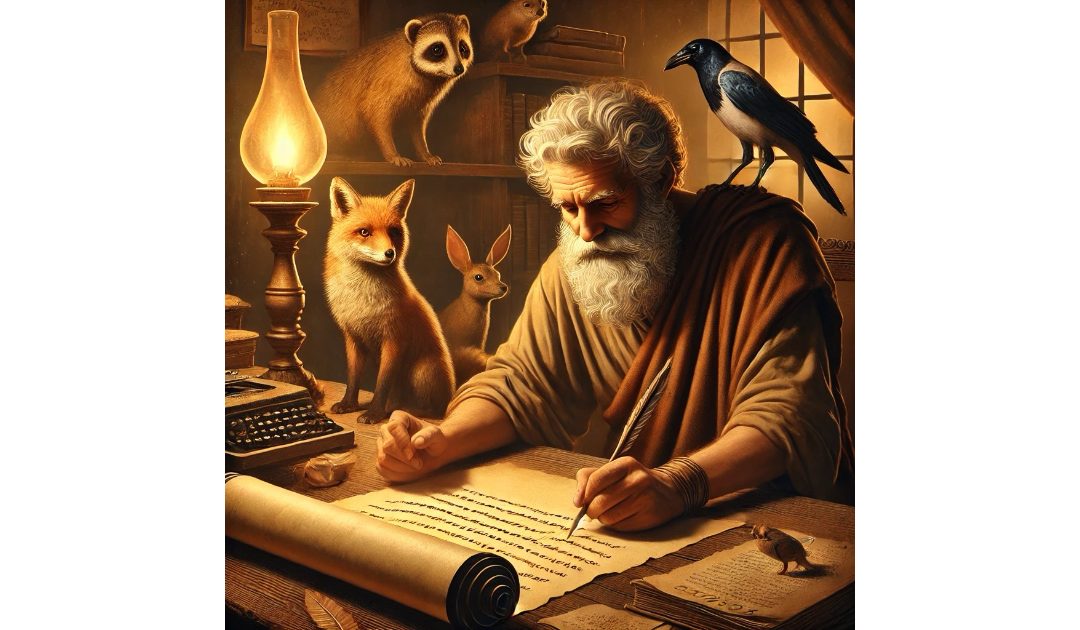On the 26th of March, 1484, William Caxton printed his translation of Aesop’s Fables. The name Aesop is synonymous with moral tales and stories that have transcended generations, offering wisdom and insights into human nature. Although there is much debate around the historical figure of Aesop himself, his fables continue to be a cornerstone of literary tradition, influencing cultures around the world.
Aesop is believed to have been a storyteller or fabulist in ancient Greece, living around the 6th century BCE. Yet, much about him is shrouded in mystery and legend. Some accounts describe him as a slave who gained his freedom through his wit and storytelling prowess. While his existence is often debated among historians, the legacy of his fables is indisputable.
The stories attributed to Aesop often feature animals that portray human characteristics, allowing them to deliver moral lessons in a simple yet powerful way. These tales have been passed down through oral traditions and later compiled into written collections, with notable contributions from authors like Phaedrus and Babrius in the ancient world, and subsequently from medieval and modern translators and compilers.
Aesop’s fables are typically short and to the point, using minimal characters to convey a straightforward moral or lesson. This brevity allows them to be easily remembered and retold, a key factor in their endurance over the centuries. The use of animals as characters serves as a universal tool, enabling the stories to transcend cultural and linguistic barriers.
Themes in Aesop’s fables often focus on virtues such as honesty, kindness, and humility, as well as warnings against vices like greed, pride, and deceit. For instance, “The Tortoise and the Hare” teaches the value of persistence and steady effort over arrogance and hastiness. Similarly, “The Boy Who Cried Wolf” warns against the dangers of lying and the loss of trust.
Aesop’s fables have had a significant impact on education and culture across the globe. They have been used as teaching tools for centuries, not only to impart moral lessons but also to develop critical thinking and interpretive skills in young learners. Through these fables, children learn to differentiate right from wrong, understand cause and effect, and appreciate the consequences of one’s actions.
The influence of Aesop’s fables extends beyond educational settings into popular culture. Phrases like “sour grapes” and “crying wolf” have their origins in Aesopian tales and are commonly used in everyday language to describe certain behaviours or situations. The stories have also inspired countless adaptations in theatre, film, and literature, showcasing their versatility and appeal.
Despite their ancient origins, Aesop’s fables remain remarkably relevant in today’s world. In an age where ethical dilemmas and moral questions often dominate public discourse, these simple tales provide timeless guidance and reflection. They remind us of the universal truths about human nature and the values that bind us together as a society.
Moreover, the adaptability of Aesop’s fables allows them to be revisited and reinterpreted in contemporary contexts. Modern authors, educators, and artists continue to draw inspiration from these stories, finding new ways to engage audiences and explore their fundamental messages.
In conclusion, Aesop’s fables are more than just children’s stories; they are an enduring testament to the power of storytelling and its ability to convey wisdom across generations. Whether read for pleasure or used as educational tools, these fables encourage us to reflect on our actions and their impact on the world around us. As such, Aesop’s legacy will undoubtedly continue to resonate with audience’s young and old for centuries to come, reminding us of the enduring power of a good story to inspire and educate.

